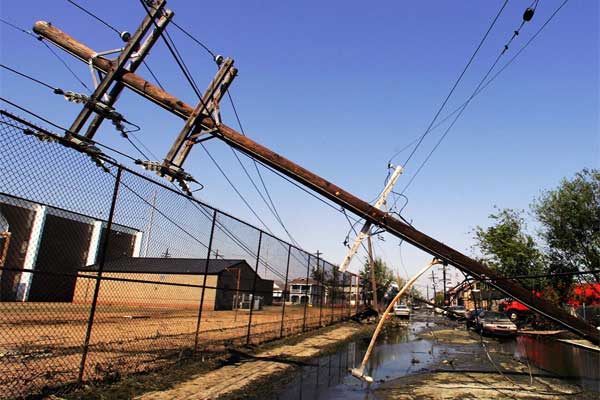Recent extreme weather events (Hurricane Harvey in Houston, and Irma in Florida) has brought attention to the need for building up grid resiliency in the face of a changing climate, and technological disruption. Utilities must adapt to the changes occurring now to meet consumer requirements in the future.
Utilities would best ramp up solar energy to build grid resiliency.
Hurricane Harvey slammed Houston, Texas over a four-day period, bringing 51 inches of torrential rain, flash floods, disturbing images of rescues, and heartbreaking stories. Hurricane Irma hit Florida, caused severe damage and flooding in many locations.
Analysts suggest the costs of both storms combined range from $150 to $290 billion.
As these harsh events occur, there is a tremendous impact on the local energy companies.
According to GreenTech Media, Harvey caused 300,000 people to have no power on Sunday, August 27th when the storm hit. Power restoration efforts were delayed due to heavy torrential rainfall from Harvey, which limited power restorations until the rains stopped.
Houston’s CenterPoint Energy was only able to bring customers without power down to 112,000 by Monday Afternoon, August 28th. Smart Meters mixed with social media tools, including Twitter, played a vital role in finding which customers had no power.
However, CenterPoint workers could not reach many parts of the city due to flooding.
As Irma tore apart Florida with flash floods and heavy winds, residents with solar energy could not use their solar systems as they are required to shut them down during outages in their communities, or they would be breaking state law, according to Digital Journal.
As both Harvey and Irene showcased, utilities will need to become more flexible, as we see more extreme weather events due to climate change. The 2014 National Climate Assessment (NCA) report said intense rainfalls have increased within the past 30-50 years due to anthropogenic climate change.
A preliminary released version of 2018 NCA report also confirmed extreme weather events were increasing due to climate change. Climate change will also impact hurricanes through more intense rainfall as oceans get warmer, which increases water vapor, and fuels the chances for more rain events.
We have seen solar power stand the test of other extreme weather phenomena, including Superstorm Sandy back in 2012.
During Superstorm Sandy, renewables, including wind and solar stood well against the chaos. Christian Science Monitor (CSM) noted that solar energy helped provide power to the area which was hit by the storm.
At the same time, the damage was minimal. Renewable Energy insurance broker SolarInsure said to CSM they received very few claims for the lost property from Superstorm Sandy.
Falling storage prices will have further pressure on utilities to become more adjustable to include solar power, as customers may go off the grid.

Downed telephone and power cable poles in the streets of New Orleans on Sept. 11, 2005. Aftermath of Hurricane Katrina. Image: Omar Torres/Getty Images
A McKinsey & Company report released this summer said battery storage prices are falling more rapidly than predicted, thanks to increased demand for electric vehicles, and consumer electronics. Battery-pack costs in 2016 reached $230/kWh, a sharp $770/kWh decline from 2010 (when it was $1,000/kWh).
As storage prices fall, this will allow the consumer to store their solar energy at home, causing some ratepayers to at least go off the grid partially in favor of producing their clean electricity, while reaping the savings.
As Quartz said “It’s great news for those receiving utility bills. It’s possible Armageddon for utilities.”
Outside the box thinking from utilities is needed to adapt to a rapidly changing landscape within the context of disruptive energy technologies and a warming planet. There is no shortage of unique ideas utilities can take and run the ball with for them to thrive in the future.
McKinsey & Company said many businesses within the utility space are now installing solar panels and battery storage units, while others are providing data-management and analytical services to their customers, so they can better manage their energy.
Utilities are not going away soon. However, understanding disruptive technology trends and increased extreme weather events from climate change will provide new challenges, and opportunities moving forward.












Comments